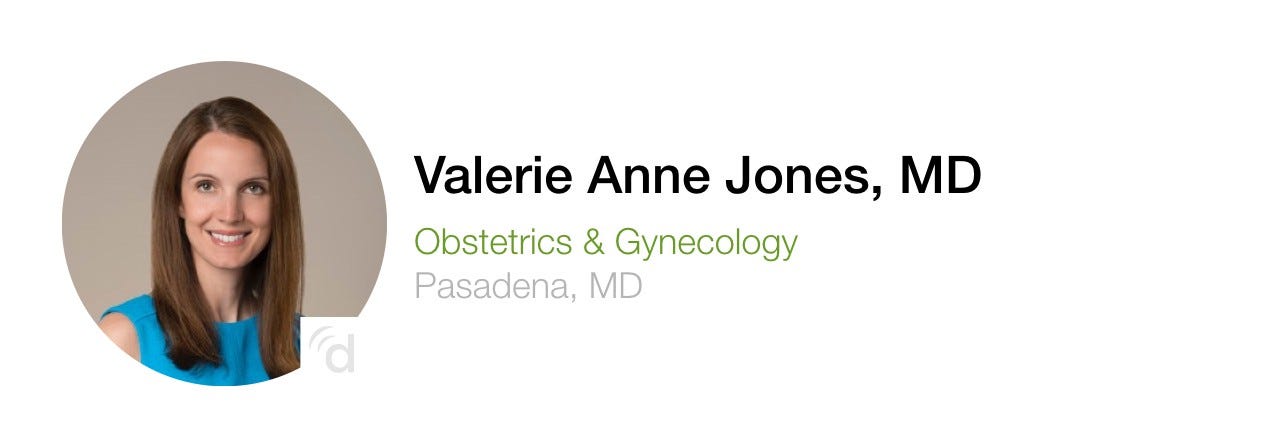
The statistics are staggering.
The high maternal mortality rate in the US has been a matter of great interest and debate, spurring a reflective look into our healthcare system to determine why our country is on the wrong end of this statistic. The reasons and numbers vary across the country and notably in the state of Maryland, which has had a higher than average maternal mortality rate, the number of maternal deaths continues to increase at a rapid pace.
In a comparison of two study periods (2005–2009) to (2010–2014), while the maternal mortality rate increased by an astounding 32% nationwide, it increased by an even more astounding 51% in Maryland.
I must admit, as an obstetrician-gynecologist I was skeptical of the media hype regarding maternal mortality in the US (compared to other countries with less advanced technology and more limited access to medications and high quality medical care).
However, there is no denying the fact that the rate is indeed increasing. As I think about these statistics, it becomes clear to me that there are two major crises in the field of women’s health.
Maternal Mortality
The causes vary, but as discovered in the “Maryland Maternal Mortality Review Program” in 2014, the leading cause of death of pregnant women was substance abuse disorder – unintentional overdose. Meanwhile, the leading cause of death directly associated with pregnancy was hemorrhage.
Death by drug can be experienced by anyone, but death directly associated with pregnancy can only be experienced by the pregnant. This difference is important.
On news outlets, social media, and magazines you have likely heard stories about the loss of a pregnant mother or postpartum patient under horrible circumstances of medical negligence or some preventable health cause. These stories are heartbreaking and infuriating and should not happen, especially in this country. These types of stories also bring ratings, clicks, followers, etc. and are unfortunately also a contributing cause for the growing distrust of physicians based on a very small minority picture of the problem at hand.
The important piece to consider is that a woman who overdoses while pregnant is also considered in overall pregnancy death statistics. Again, overdose was the #1 cause of pregnancy-associated death. The US is facing an opioid epidemic and pregnant women are not spared from this. Substance abuse prevention and treatment programs during pregnancy will be paramount in reducing the number of maternal mortalities.
More research is needed to determine the complete impact drug use is having on our maternal mortality statistic.
Hemorrhage treatment is also an area where we can improve, and an effort has been made to have massive transfusion protocols and training in hospitals. This is a start.
Ob-Gyn Shortage
Is our country’s shortage of obstetricians linked to our high maternal mortality rate? I don’t think we have the evidence to support this notion. However, we may start to see concerns in the coming years as this shortage becomes more pressing.
The American Congress of Obstetricians and Gynecologists (ACOG) put together a workforce to assess the situation. Facts that emerged are as follows:
In the state of Nevada there are 11 (out of 17) counties without a single practicing ob-gyn. Nevada’s female population is expected to increase by 64% by 2030, while the total US female population is expected to increase by 17%.
There are 2.08 ob-gyns per 10,000 women in this state.
By the year 2030, the US is expected to have an 18% (9000) shortage of ob-gyns.
These numbers are outrageous and it is obviously not limited to the state of Nevada, but a nationwide concern. What is causing this ob-gyn shortage, seen not only in Nevada but across the country? Well, the task force also noted an increase in the population of women in the US of 26% since 1980, but the number of ob-gyns trained has remained stagnant due to limited residency training spots (which are still filling each match day). Medical students still remain eager to enter the field of ob-gyn, although with some trepidation and concerns regarding lifestyle and malpractice premiums/lawsuits. The problem arises after they finish residency.
We are starting to see an aging ob-gyn workforce. In addition, physicians are working decreased hours and are retiring early from obstetrics. More recently, ob-gyn residents are opting to avoid obstetrics altogether and are choosing to sub-specialize at increasing rates in fields such as Minimally Invasive Gyn Surgery, Urogynecology, and Gynecologic Oncology. Work-life balance can be better in these fields and malpractice premiums are also much lower. Maintaining our current ob-gyn workforce should be top priority. This starts with supporting them by finally obtaining meaningful liability reform, sustainable working conditions, a positive PR campaign, and increasing the number of residency spots (especially in states such as Nevada with urgent needs).
If we don’t address the obstetrician shortage, we will burn out the ones still in the field. It is not good for our physicians, or more importantly, our patients to have a limited supply of medical knowledge and expertise. In our efforts to decrease the maternal mortality rate in the US, the ob-gyn shortage must also be addressed.

Valerie A. Jones is an obstetrician-gynecologist and 2017–2018 Doximity Fellow. She can be reached at her blog obdoctormom.com.







